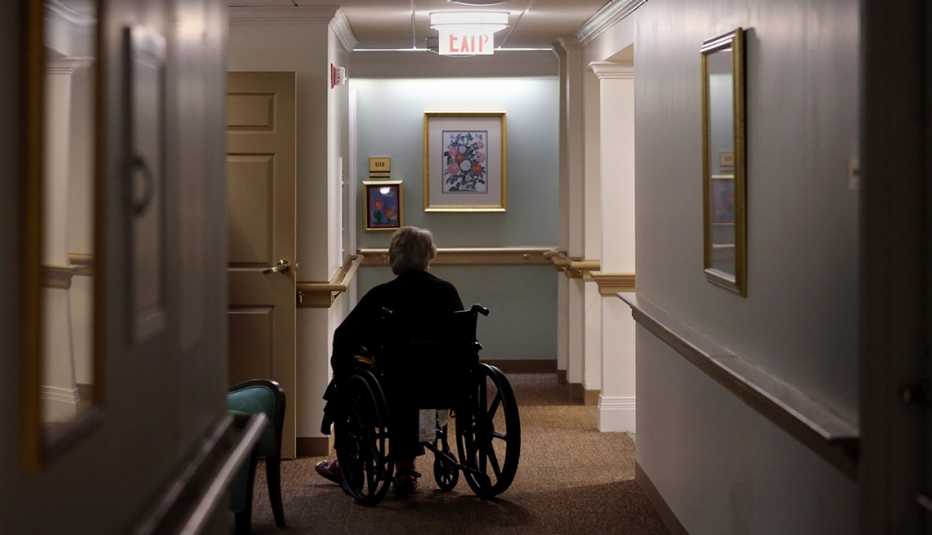AARP Hearing Center
When the Centers for Disease Control and Prevention (CDC) recommended last month that residents and staff of long-term care facilities be among the first to receive COVID-19 vaccines, Sondra Norder breathed a sigh of relief.
The president and CEO of St. Paul Elder Services in Wisconsin has seen 100 residents contract COVID-19 across her two campuses over the course of the pandemic. Twenty-eight have died.
"The trauma we have been through, the isolation we have been through, the demand physically and mentally over the last 10 months — we've just been disproportionately impacted,” she says. “I don't think there's anybody more deserving of having this vaccine on board as soon as possible, so that we can start to heal from this."
With COVID-19 deaths in long-term care accounting for 37 percent of the country's coronavirus fatalities — some 133,000 — almost all states have followed the CDC's guidance in pushing long-term care residents and staff to the very front of their vaccine lines.
But actually getting shots into arms of those residents and staff isn't happening nearly as swiftly or seamlessly as planned. So far, just over 950,000 residents and staff of long-term care facilities have received the first of two necessary shots, according to the CDC.
Most of those are likely to have gone to residents and staff of nursing homes, as states generally granted priority to nursing homes over assisted living and other long-term care settings. But with roughly 2.3 million residents and full-time staff in nursing homes, it appears fewer than half have received first inoculations.
And although more than 4 million doses have been distributed for use in long-term care more broadly, only 22 percent have actually been administered.
The federal program tasked with vaccinating the vast majority of America's long-term care residents and staff has been vexed by logistical hurdles and miscommunication. Vaccine hesitancy among staff has emerged as a major issue. And reports that side effects may be felt more after second doses than the first raise concerns about more staff shortages when resources are needed most.
Adding more worry is the extreme level of community spread, with more than a quarter-million new cases and near or above 4,000 deaths across the U.S. on recent days, setting records for the pandemic. Increased community spread means more nursing home outbreaks.
"Even though there's light at the end of the tunnel there” thanks to vaccines, Norder says, “the lights are all still blinking red for us.”
A slow start
Unlike the delivery of most COVID vaccines, which the federal government is handing off to individual states, the feds are spearheading vaccinations in nursing homes. Through its Pharmacy Partnership for Long-Term Care Program, the government has contracted with CVS, Walgreens and other pharmacies in certain states to supply and administer vaccines at no cost to long-term care residents and staff at their facilities.
The government says that 99 percent of the nation's roughly 15,600 nursing homes have registered with the program. In 20 states, every single home has signed up. CVS is partnering with over 40,000 facilities, including nursing homes, assisted living communities and other types of long-term care settings, to provide vaccines to up to 4 million residents and staff. Walgreens is partnering with roughly 35,000 facilities to provide vaccines to up to 3 million more.
"We could have every nursing home patient vaccinated in the United States by Christmas,” Health and Human Services (HHS) Secretary Alex Azar said in mid-December, describing the program.







































































